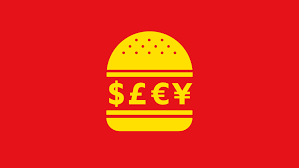There are not many ideas of the utmost importance in economics that can be equated with the concept of diminishing marginal utility. It is a crucial part of microeconomic theory that assists us in understanding decisions by consumers and their behavior. Discussions on this principle provide useful insights into our lives, businesses and the economy as a whole. This review will look into diminishing marginal utility; its applications as well as its continuing relevance to economic analysis.
The heart of the matter is that according to the law of diminishing marginal utility, when a consumer consumes more units of a particular good or service, the additional satisfaction derived from each additional unit diminishes over time. The law sums it up such that, the satisfaction an individual derives from consuming each extra unit goes down as he or she consumes more units. This explanation has implications for two main principles such as scarcity and human rationality whereby individuals strive to allocate their limited resources so as to maximize total pleasure or welfare.
Consider, by way of example, having ice cream on a sunny day. The first bite of the ice cream is always blissful; it slakes your thirst and becomes a refreshing sensation. Nevertheless, as you take in more scoops this manner however, the marginal utility – or satisfaction derived from each additional scoop – decreases. Ultimately you will discover that eating more ice-cream does not offer much greater satisfaction anymore and could also be uncomfortable to do so thus showing how consuming goods loses its pleasure with time.
In business, all stakeholders should understand implications for producers who make goods and services to consumers regarding diminishing marginal utility. This indicates that consumers need to use their heads when making choices about scarce resources. The fact that the amount of satisfaction one gets per unit falls over periods (preferences), but usually hinges on the situation means that individuals can make wise choices about how they spend their income on different competing items by recognizing this fact. It might mean giving preference to necessities over luxuries or looking out for other avenues which could be rewarding enough or even varying consumption patterns as they develop with time according to preferences.
The law of diminishing utility is what guides producers on how to price, what to produce, and how to develop their products. This means that the more consumers pay for each additional unit, the less satisfaction they derive from it. Hence, suppliers have to strike a balance between supply and demand in order to maximize their profitability. To this end, firms may set prices that reflect diminished marginal utilities of goods as well as create a range of products for distinct consumer preferences and market segments.
Furthermore, innovation and differentiation are important ways through which companies can maintain customers’ interest and loyalty according to the law of diminishing marginal utility. In this regard, businesses operating within competitive markets have no other options but developing new product versions which meet consumers’ changing tastes. Therefore, by enhancing value derived from commodities through unique features such as experiences or value propositions, competitors are capable of expanding their customer bases at the expense of rivals in the same industry.
Opponents of the law of diminishing marginal utility argue that it reduces consumer behavior to a simple model and ignores other factors such as idiosyncratic tastes, levels of income and psycho-dynamics. Also, the law assumes that people’s tastes remain constant over time – an assumption that is not necessarily true in real life. Nevertheless, given these contentions, the law has remained as one of the basic elements in Economics since it provides useful perspectives on how people behave and make choices as consumers.
Summing up, however, this principle remains to be among the main pillars in economic theory offering useful insights into consumer behavior, decision making processes and market dynamics. This knowledge enables individuals and companies to understand when they have the right amount of something since each additional unit consumed gives less satisfaction. On a scarcity principle basis when resources are limited or not enough for everyone who wants them; one may also use this concept while studying products’ prices within markets.
In short, the explanation of this economic theory is that, if you order a pie of pizza and you are starving, the first slice will taste a lot better than the sixth. I personally find this theory quite interesting and have been understanding it since my father introduced it to me a while ago.
– Naman Nowal, AS A






Leave a comment